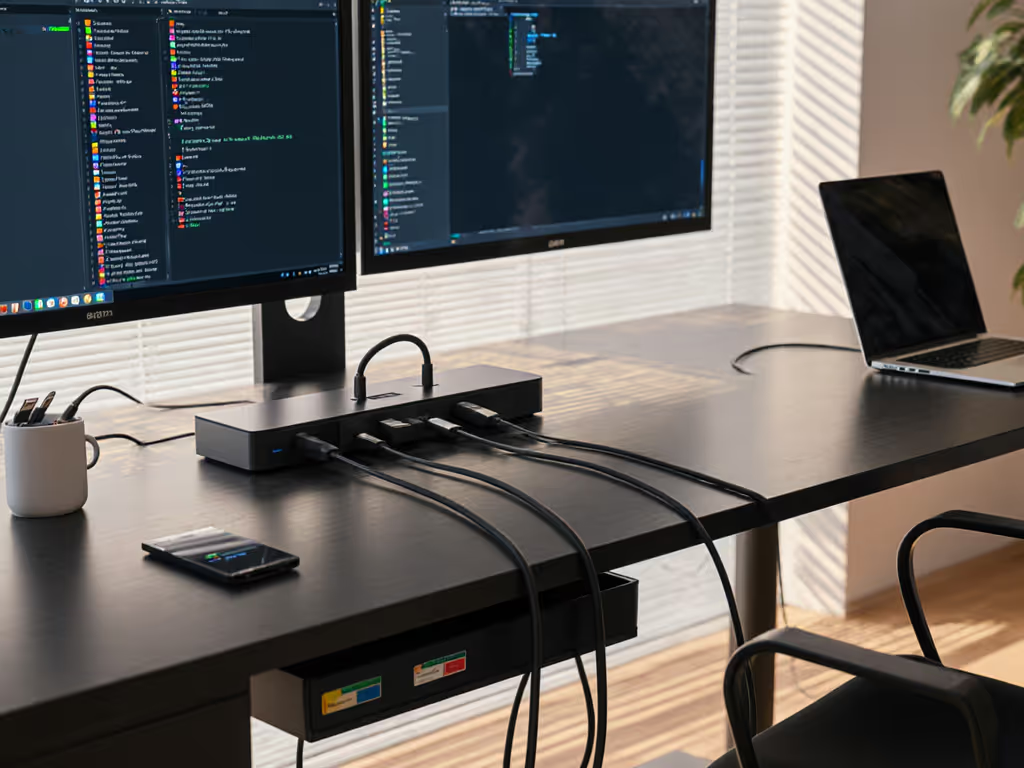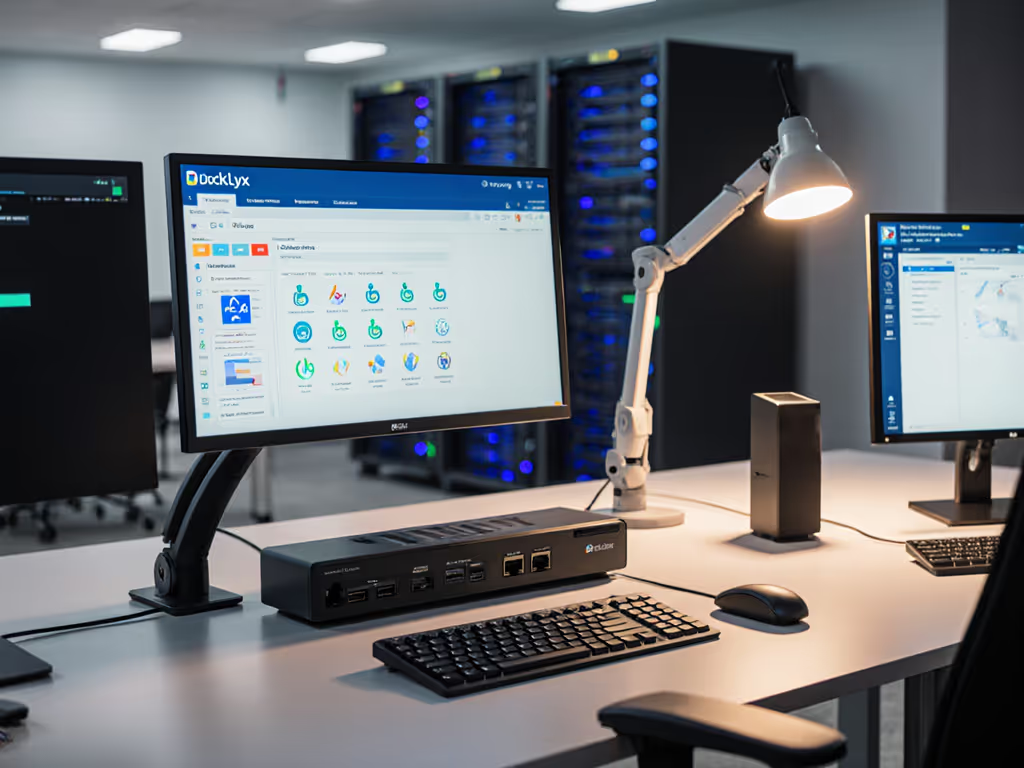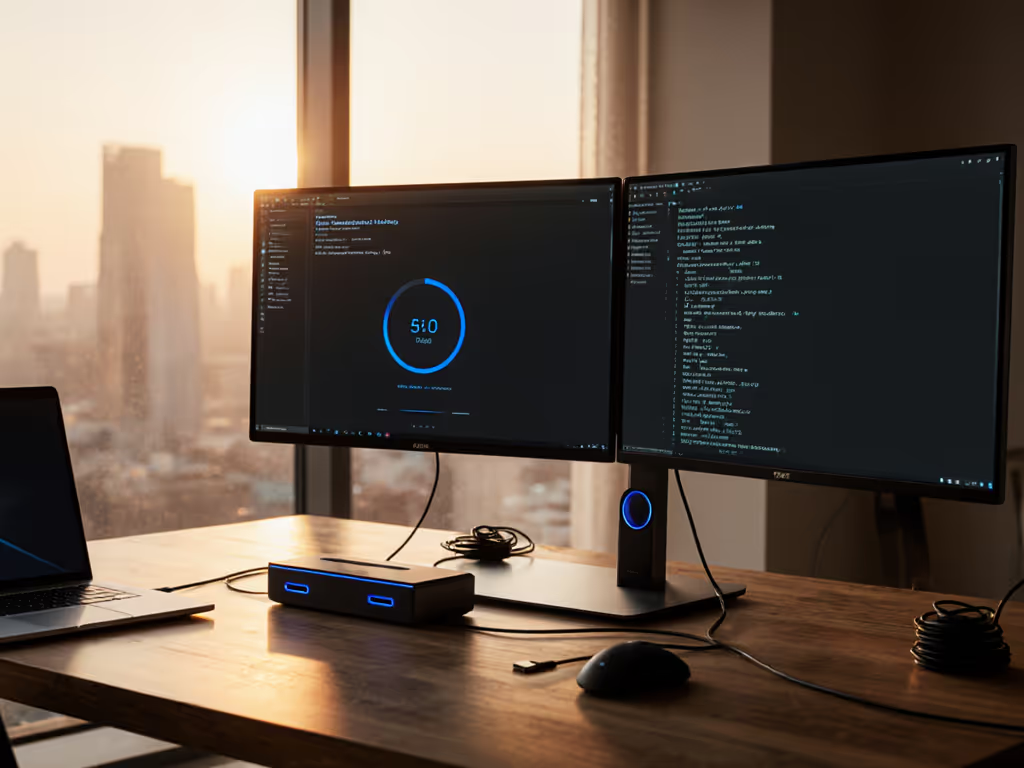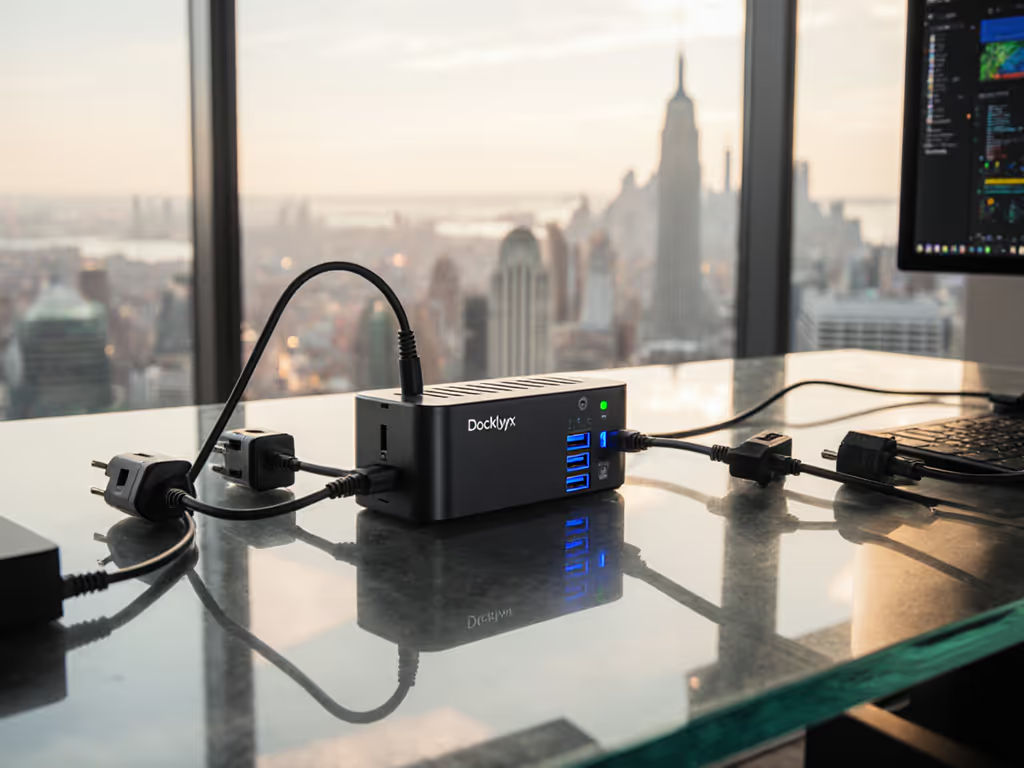
Standard Docking Station Desktop Setup Guide
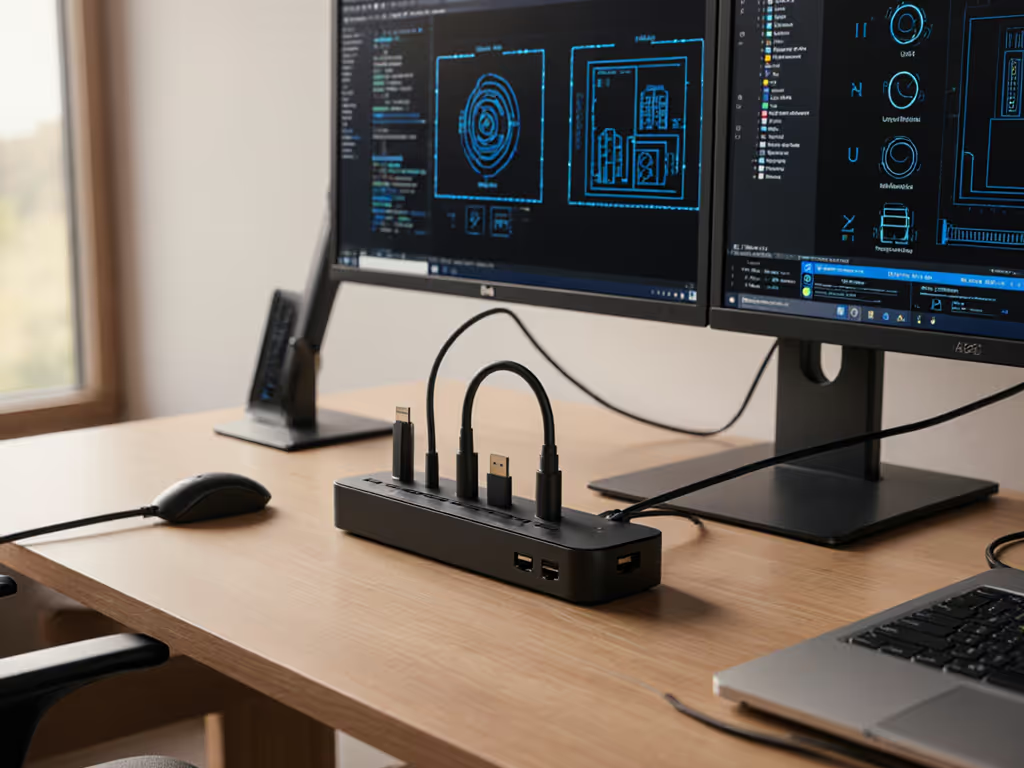
The quest for a reliable docking station desktop configuration that just works across diverse fleets isn't about finding the shiniest new gadget (it is about implementing procurement-friendly standards that survive refresh cycles). After untangling dozens of chaotic dock deployments across multinational enterprises, I've learned that predictability, not novelty, delivers the lowest total cost of ownership. Standardize the kit, and your tickets standardize themselves.
Fewer SKUs, fewer surprises. This isn't just my mantra, it is the mathematical reality of endpoint management. Our help desk lived on dock tickets until we collapsed twelve SKUs into one Thunderbolt 4 kit (dock, 100W PSU, two labeled DP cables, and a known-good USB-C cable). Procurement embraced the predictability. Users got the single-cable simplicity they demanded. The math was irrefutable: $15 higher unit cost translated to 78% fewer support tickets and a 3.2-hour reduction in onboarding time per employee.
Why Standardization Beats Variety
Most docking station failures stem from variable creep: mismatched cables, inconsistent firmware, and OS-specific quirks that emerge across mixed fleets. Consider these operational realities:
- Power variability: 65W docks fail when mobile workstations demand 100W+ under load, draining batteries during video calls
- Display chaos: "Dual 4K" claims often mean 30Hz refresh on HDMI 1.4 ports or single external display limits on macOS M-series
- Hot-desk friction: Different laptop behaviors with identical docks cause 8-12 minute setup delays per hot-desk rotation
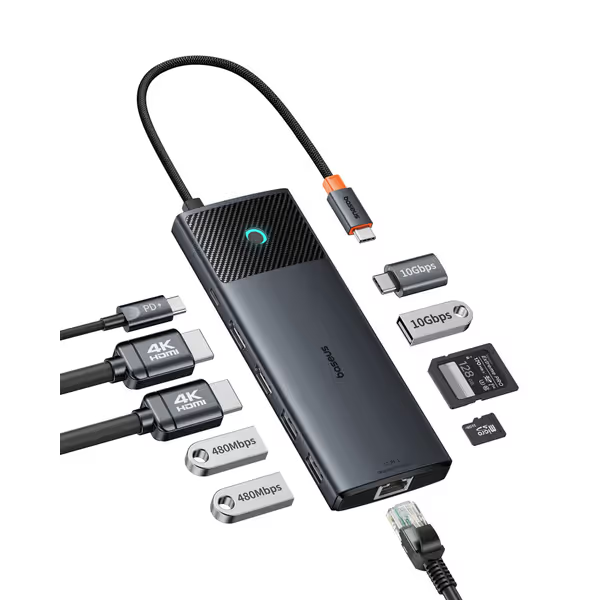
Baseus 10-in-1 Dual Monitor Docking Station
A true enterprise-grade docking station desktop standard solves these with surgical precision. If you're selecting models for standardization, see our IT-tested business docking stations comparison for security features, manageability, and support policies. It accounts for three critical dimensions:
- Power headroom: Minimum 100W PD to handle peak CPU/GPU loads without throttling
- Display certainty: Verified resolutions across OS platforms (e.g., Dual 4K@60 via DisplayPort 1.4, not HDMI)
- Component completeness: Every cable and PSU included in the kit, no improvisation allowed
Building Your Standard Docking Station Desktop Kit
When designing a cross-platform docking station desktop standard, focus on outcomes, not specs. The real question isn't "Does it support USB4?" but "Will it deliver dual 4K@60 to Windows 11 and macOS with stable Ethernet on Dell XPS 15s and MacBook Pros?"
Essential Components Checklist
- Docking station: Thunderbolt 4 preferred for universal compatibility (Windows/macOS) and guaranteed bandwidth
- Power supply: 100W+ with GaN tech for compactness; labeled wattage matching your fleet's peak draw
- Primary cable: 0.8m Thunderbolt 4 cable (pre-attached to the dock to prevent substitution)
- Display cables: Two identical DisplayPort 1.4 cables (6ft), labeled "PORT 1" and "PORT 2" for consistent placement
- Spares kit: 1 spare dock, 2 PSUs, 4 cables per 100 seats for hot-swap replacements
The critical insight? Standardization extends beyond the dock itself. Your cable nomenclature matters. "DP cable for left monitor" gets lost in translation; "PORT 1: 6ft DP 1.4" survives language barriers and employee turnover.
Implementation Protocol: Beyond Basic Setup
Most guides stop at "plug in the cable and configure displays." Enterprise-grade docking station desktop management requires deeper operational rigor:
Phase 1: Pre-Deployment Validation
- Test matrix: Document exact combinations (e.g., "Dock Model X + Lenovo P1 Gen 4 + 2x Dell U2720Q = Dual 4K@60 on Windows 11 Build 22H2")
- Driver baseline: Capture required firmware/driver versions; automate deployment via SCCM/Intune
- TCO calculation: Factor in expected ticket reduction (e.g., 50 tickets/month × $45 avg. cost = $2,700 monthly savings)
Phase 2: Deployment Execution
- Image the dock: Apply firmware baseline before deployment
- Bundle components: All elements physically taped together in the deployment kit
- Standard placement: Dock positioned right of the monitor with a cable management clip
- User training: 30-second video showing single-cable connection (no cable hunting)
Fewer SKUs, fewer surprises. That single Thunderbolt 4 kit we implemented across 1,200 desks? It reduced dock-related tickets by 83% and cut new hire setup time from 47 minutes to 15.
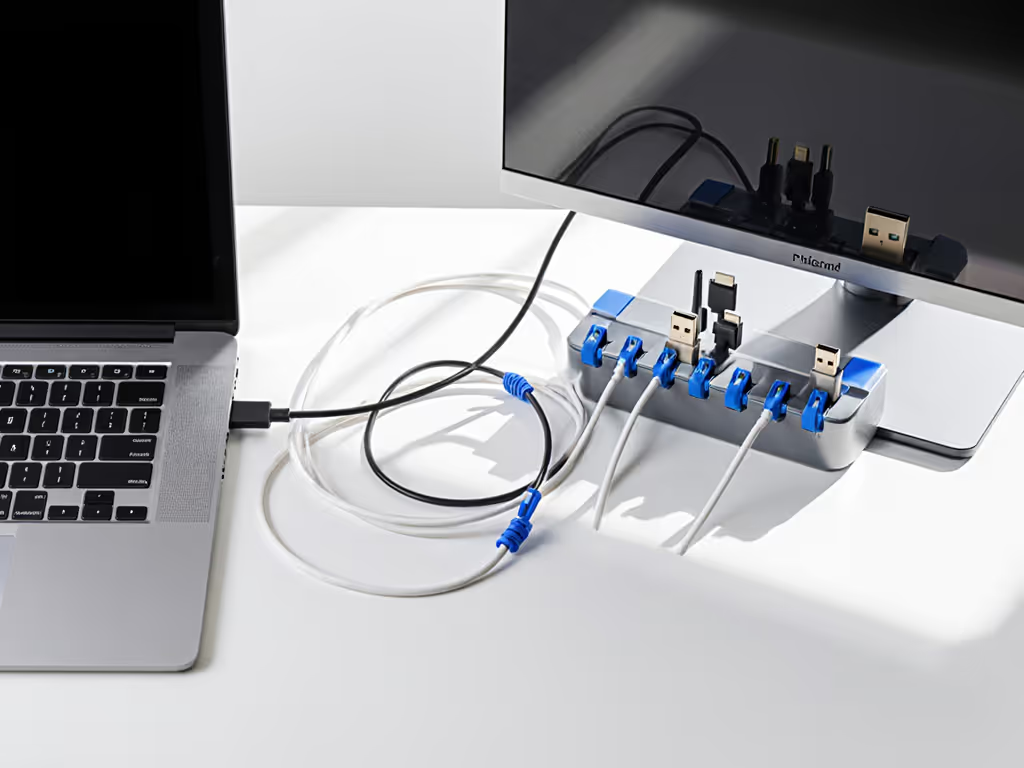
Troubleshooting Docking Station Issues: The Standardization Advantage
When problems arise, standardized kits transform troubleshooting from detective work into pattern recognition. Consider these common pain points:
-
"How to connect multiple monitors" failures: Often stem from HDMI 1.4 limitations (max 30Hz at 4K) or macOS SST restrictions. Standard kits avoid HDMI for primary displays and use DisplayPort for guaranteed 60Hz.
-
"Docking station driver installation" problems: Solved by pre-bundling firmware versions with your OS image. No manual updates, just validated baselines.
-
Charging issues: Caused by mismatched cables (non-E-marked) or USB-C ports that lack power delivery. Standard kits use pre-attached cables with specified wattage.
The key insight: with standardized kits, troubleshooting becomes binary. Either the known-good configuration works (indicating user error), or it fails consistently (revealing a systemic issue needing escalation).
Future-Proofing Through Lifecycle Planning
True docking station desktop standards account for obsolescence. Demand these lifecycle guarantees from vendors:
- Minimum 4-year availability with end-of-life notifications 18 months in advance
- Hardware revision transparency (no "mystery SKU" changes)
- Cross-OEM compatibility (tested with Dell, HP, Lenovo, Apple)
When evaluating a dock like the Baseus model mentioned earlier, focus on its component-level reliability, not just initial cost. A $50 dock requiring quarterly replacements costs more than a $120 dock lasting 4 years. Calculate your real TCO: (Unit cost ÷ lifespan in years) + (Ticket volume × resolution cost).
Your Standardization Action Plan
Tomorrow morning, do this:
- Audit your current dock SKUs - list every model, its cable variants, and PSUs
- Calculate the hidden costs of your current approach (tickets × $45, setup time × $75/hr)
- Identify one persona (e.g., knowledge workers) for your first standard kit
- Build a single test configuration with complete, labeled components
The dock itself is merely the hub. The real value lives in the standardized ecosystem around it (where every cable, PSU, and process decision compounds into operational certainty). Stop optimizing for unit cost and start engineering for predictability. When your entire docking station desktop environment speaks one language, your help desk finally gets to rest.
Related Articles

